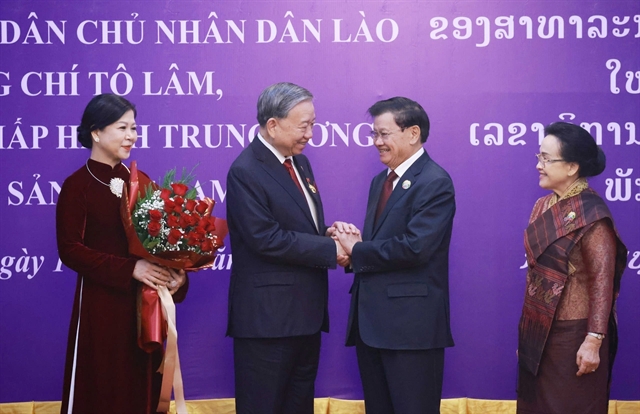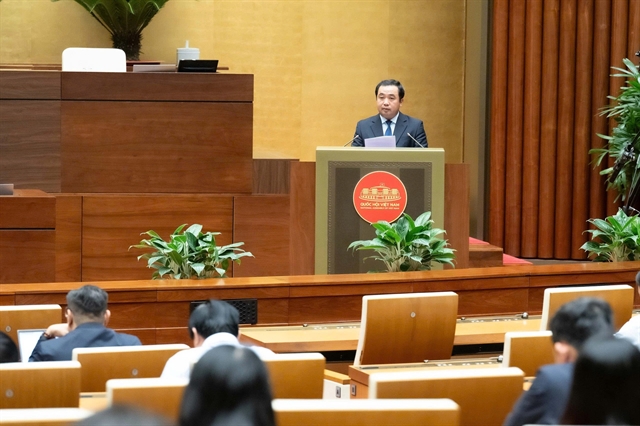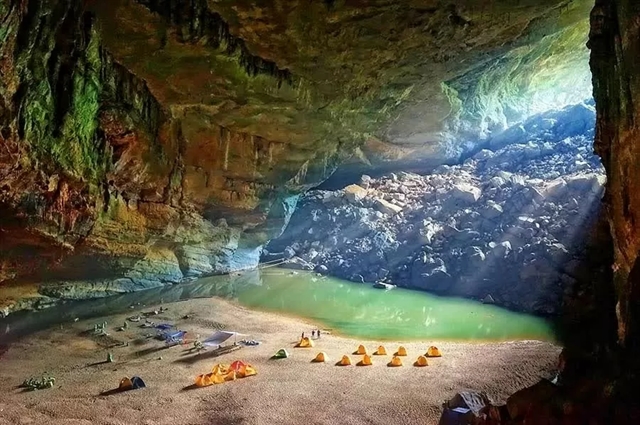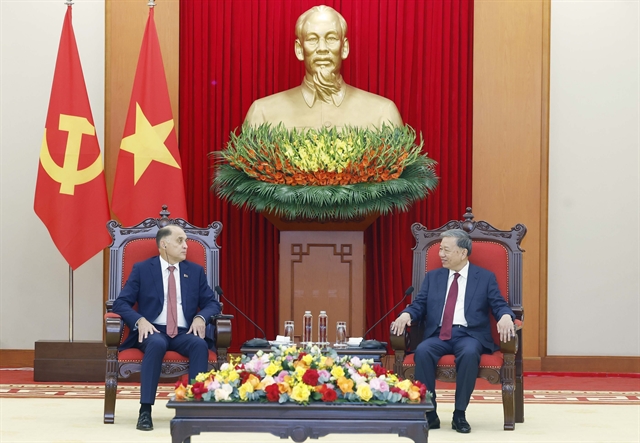 Opinion
Opinion

 |
| Bùi Hoài Sơn, member of the Culture and Society Committee of the National Assembly. Photo quochoi.vn |
By Bùi Hoài Sơn*
The designation by UNESCO of Việt Nam's Phong Nha Kẻ Bàng National Park and Laos's Hin Nam No National Park as the first transboundary World Natural Heritage site for the two countries opens up a new model of conservation cooperation among countries in the region.
This success story is a clear evidence of the importance of protecting transboundary heritages in the context of globalisation and climate change.
Heritage space has long been understood as a place that preserves the unique values of nature and humanity, tied to a specific community or nation. However, in today's era – an age of cross-border flows, global climate change and the aspiration to preserve what humanity shares – this understanding is no longer sufficient.
Heritage does not belong to anyone alone. The preservation of heritage requires a new approach that transcends administrative boundaries and ownership mentality, focusing on the common values of solidarity, cooperation and humanity.
UNESCO's recognition is a testament to that mindset. It is a turning point that marks the maturation of conservation thinking in Southeast Asia – a region where natural values are not divided by borders but are interconnected by hundreds of millions of years of geological history, transboundary ecosystems, and a shared sense of responsibility.
In UNESCO's World Heritage system, transboundary sites are increasingly emphasised as a comprehensive solution to protect vast ecosystems, ensuring the integrity and continuity of values.
It is no coincidence that the world has successful models like the Wadden Sea (Netherlands-Germany-Denmark), the Amazon rainforest (various South American countries), and the Carpathian Mountains (Poland-Slovakia-Ukraine).
All of these examples show that only when countries share the same viewpoint and work together to preserve natural and cultural values can they protect something greater.
In such context, Việt Nam and Laos have demonstrated strategic vision by jointly developing the first transboundary heritage dossier in the region. This action shows that the two countries are partners sharing the responsibility of preserving the priceless heritage of humanity.
This event also marks the opening of a new approach in heritage policy, which is not only about preservation but also about connection, cooperation and sustainable development based on common values.
Heritage no longer exists solely in museums or closed projects; it is stepping beyond all boundaries to become a symbol of peace, cooperation and development. It is a shared responsibility of nations in the effort to protect the Earth, as heritage is the memory of the past, the witness of the present and a commitment for the future.
Symbol of friendship
 |
| Phong Nha Kẻ Bàng National Park was designated by UNESCO as a World Natural Heritage site in 2003 and in 2015. Photo courtesy of TITC |
There are heritage sites designated for the majestic beauty of nature. Some are celebrated for their historical depth or biological uniqueness. However, there are also heritage sites, like Phong Nha Kẻ Bàng and Hin Nam No, that embody values that transcend all others: those of peace, friendship and mutual development between the two nations.
This heritage is a geological wonder over 400 million years old and also a crystallisation of the steadfast relationship between Việt Nam and Laos, nurtured through sacrifices during wars of resistance, cooperation in peace, and now through a shared commitment to preserving the common heritage of humanity.
The joint nomination of a transboundary heritage site is both a professional activity and a symbolic action that reflects a profound political vision and the long-term strategic bond between the two countries.
It is heritage sites like Phong Nha Kẻ Bàng and Hin Nam No that have become that soft bastion where every cave, every underground river and every karst forest tells a story of coexistence and the choice to connect.
From a policy perspective, the establishment of the first transboundary heritage site between Việt Nam and Laos is a significant milestone in the strategy of heritage diplomacy – a form of soft diplomacy that countries are increasingly leveraging to enhance national stature and build an image of a friendly nation that is responsible to the international community.
In the resolution on Việt Nam's new cultural foreign policy strategy, heritage cooperation activities, including the development of transboundary dossiers, have been clearly oriented as a pillar of cultural and multilateral diplomacy.
Conversely, heritage also benefits from this active foreign policy. The close coordination among heritage management agencies, scientific research organisations, forest protection forces and communities on both sides of the national border has created a sustainable operational mechanism that enhances the resilience of heritage against climate change and human impacts.
At the same time, the bilateral cooperation agreements signed between provinces, ministries and management boards of special-use forests have also become a new social contract to protect resources as well as trust and responsibility.
From that point, the Phong Nha Kẻ Bàng - Hin Nam No transboundary World Natural Heritage site is not merely a scenic spot or a special ecological area. It has become a vibrant symbol of a new model of cooperation among countries in Southeast Asia: sharing knowledge, enhancing management capacity and, most importantly, jointly preserving heritage for future generations. VNS
*Bùi Hoài Sơn is a member of the National Assembly's Culture and Society Committee




